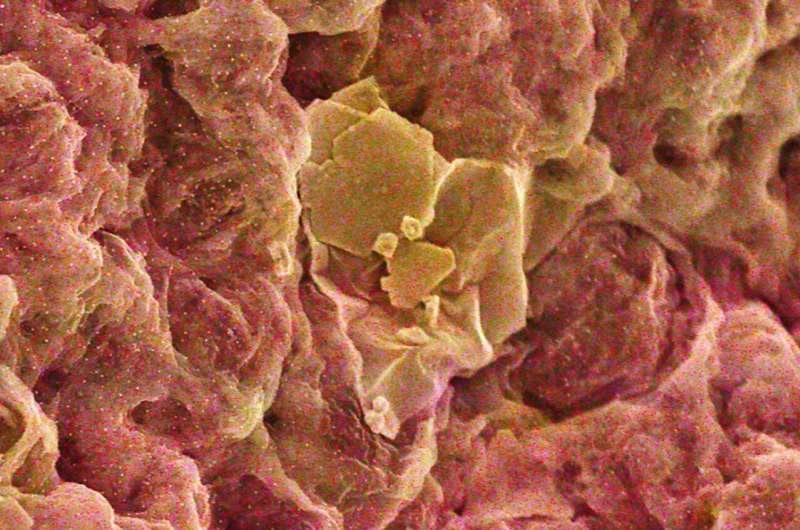Graphene Oxide and Chitosan Sponge Proven to be Ten Times More Effective for Gold Extraction from E-Waste

October 26, 2024 report
This article has been reviewed according to Science X's editorial process and policies. Editors have highlighted the following attributes while ensuring the content's credibility:
fact-checked
peer-reviewed publication
trusted source
proofread
by Bob Yirka, Phys.org
A team of chemists and materials scientists at the National University of Singapore, working with colleagues from Manchester University, in the U.K., and Guangdong University of Technology, in China, has developed a type of sponge made of graphene oxide and chitosan, that can be used to extract gold from electronic waste.
In their paper published in the Proceedings of the National Academy of Sciences, the group describes how they made their sponge and how well it worked during testing.
Prior research has shown that removing gold, silver and other metals from electronic equipment that is no longer useful, as a way to recycle such materials, is a difficult and often dirty business. Quite often it results in low yields and the generation of a variety of toxic pollutants.
In this new study, the research team has found a way to remove the gold in a way that is cheaper and cleaner than conventional methods and much more efficient as well.
The research team chose their materials purposely—both have been used to extract gold from other materials. Also, graphene has a demonstrated ability to absorb ions, and chitosan (a natural biopolymer) is a well-known reducing agent, which in this case was used to catalytically convert gold ions into their solid form.
The two materials were made into a composite by allowing the chitosan to self-assemble on two-dimensional graphene flakes—a process that also resulted in the formation of sites on the material that could bind to gold ions. After the gold ions are absorbed into the graphene, the chitosan converts them into their solid gold state, allowing for easy collection—a process the research team describes as highly efficient.
The team tested their sponge using real e-waste provided by a recycling company. The e-waste came in the form of a solution mixture, which meant it had been ground up with other materials present in the electronic equipment and mixed into a liquid. Measurement prior to treatment showed gold concentrations of 3 ppm.
The newly developed sponge was able to extract approximately 17g/g of Au3+ ions and a little more than 6 g/g of Au+. Such amounts, the team claims, are approximately 10 times that of any other known extraction process.
More information: Kou Yang et al, Graphene/chitosan nanoreactors for ultrafast and precise recovery and catalytic conversion of gold from electronic waste, Proceedings of the National Academy of Sciences (2024). DOI: 10.1073/pnas.2414449121
Journal information: Proceedings of the National Academy of Sciences
© 2024 Science X Network




